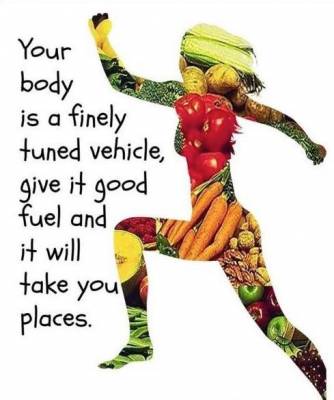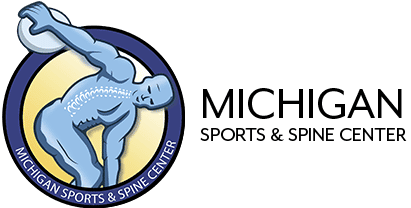Nutrition and Hydration for Optimal Athletic Performance

Kids are back in school and that means sports are heating up and kids are getting back in action (if they even took a break – but that’s an entirely other topic!). Before sending the kids out to play, have you made sure their bodies are properly fueled? Proper nutrition is absolutely vital because a machine cannot operate without fuel. Athletes are the machine, food is their fuel. Running, skating and playing hard require lots of energy and enough fluids to keep them in the game. To get the most out of their performance, here are some sport nutrition tips to ensure that your athlete is power-fueled and well hydrated before and after practices and games.
The foods you eat can be broken down into three main categories: carbohydrates, protein and fat. All athletes should eat a balanced diet with a healthy mix of these nutrients. For a serious athlete, an important decision is deciding on the best ratio for optimal performance.
Carbs are the body’s energy source, providing the glycogen used during activity. If an athlete doesn’t eat enough carbs, the body will use fat and muscle mass for energy, which isn’t ideal. Carbs should be at least 45 percent to 60 percent of an athlete’s daily calorie intake, according to National Strength and Conditioning Association nutrition guidelines.
After a workout or game, you have an optimal “window” of 30 minutes to 90 minutes in which to most effectively replenish protein you used during intense exercise, according to the U.S. Department of Agriculture President’s Council on Fitness. The recommendation for athletes is to make sure that their post-game meal is rich in protein, fairly low in fat so it’s easy to digest and contains some easily digested carbs to replenish glycogen. Foods to consider include smoothies, sandwiches and cereal. This is the time when sugary bars and even chewy candy work well to raise blood glucose levels quickly.
For a serious athlete, it is important to replenish protein stores at every meal, but particularly after an intense workout. While regular food works fine, it can take longer to digest. Some athletes may prefer a protein drink. A protein shake or drink is easy to digest, and you can consume it quickly during the “window.” It also allows you to carefully achieve an optimal balance between protein and carbs after a workout.
Choose carbohydrate-rich foods as your best energy fuel. The following foods are chock full of carbohydrates:
•Breads & Cereals (toast, crackers, granola bars, cereal)
•Vegetables & Fruit (dried fruit, fruit salad, vegetable soup and salads)
•Legumes (chick peas, lentils, kidney beans, hummus dip)
•Milk and Yogurt (plain/chocolate milk, fruit yogurt)
Be sure to include foods that add protein. The following foods provide a protein punch when they accompany your carbohydrate-rich foods:
•Nut butters (Peanut, almond, cashew, sesame)
•Eggs, milk, yogurt, cheese, cottage cheese
•Hummus dip, more bean than meat chili
•Lean cuts of meat, poultry or fish
How much you will need to eat and drink before and after practice and games will depend upon your age, weight, height, gender, the intensity of your practice session or game and the time you spend exercising.
Typical guidelines to fuel your body BEFORE practices or games:
Larger meals should be consumed 3-4 hours before practices or games to ensure that the food that you eat is digested and you are ready to perform. Sometimes you may not have a lot of time to eat a meal so eat a large snack 1-2 hours before your workout to get the energy that you need. A small snack 15-30 minutes beforehand is a good idea to ensure that you are topped up and ready to go!
It is important to remember that your body needs to be refueled after activity to help your muscles recover and repair. Eat a snack or small meal rich in carbohydrates within an hour or two of finishing your practice or game. Here are some ideas to get you refueled.
•Individual sized cereal
•Cereal bars/granola bars
•Canned fruit (snack packs)
•Dried and fresh fruit
•Applesauce
•Concentrated fruit juice
•Veggie sticks
•Trail mix (nuts/seeds/dried fruits)
•Bagels, toast or bread sticks
•Stoned wheat thins
•Low fat oatmeal raisin cookies
•Fig Newton bars
•Popcorn (pre-made at home and bagged)
•Jam, honey, peanut butter
Athletes also need to ensure they are drinking enough fluids during their exercise. Water is the number one choice but if you are looking for some extra energy have some sliced oranges with water. Sport drinks have just enough energy to keep you going on the ice and they also have added electrolytes (e.g. sodium and potassium). Adding sport drink crystals to your water bottle helps promote drinking and adds flavor.
Every athlete is different, so experiment to find what foods and fluids work best for you.
Over time including healthy food in your everyday diet gets easier and becomes a wonderful habit. Making small, healthful changes gradually is truly the recipe for success. Eat well, play well.
Acute Injuries:
- bruises/contusions
- puncture wounds/cuts
- ligament injuries
- injuries to tendons
- strains
- fractures
- bone dislocation
Overuse injuries:
- Achilles tendonitis/tendinosis – the breakdown of soft tissues around and in the Achilles tendon that connects the calf muscles to the heel bone.
- Stress fracture – a hairline crack in the bone.
- Retrocalcaneal bursitis – inflammation of the bursa, which causes rawness, sensitivity and swelling of the back of the heel and the ankle.
- Plantar fasciitis – inflammation of the thick tissue on the bottom of the foot, which in turn causes pain when walking.
- Metatarsalgia – an ache in the front (ball) of the foot.

TREATMENT:
There are several treatment options for foot and ankle pain. Be sure to contact Michigan Sports & Spine Center or another specialist in order to receive the proper diagnosis and receive the proper treatment plan.
Physical Therapy/Exercise Training:
- The combination of exercise training and physical therapy commonly includes stretching, strengthening and low-impact aerobic exercises.
- A physical therapist can design a regimen that helps to reduce pain and discomfort and strengthen the muscles that affect your ankles, therefore getting you back on track.
Injections:
- Trigger point injections – a procedure used to treat painful areas of the muscle that contain trigger points, or knots of the muscle that develop when muscles do not relax. Involves the injection of medication directly into the trigger point.
- Facet injections – entails injecting a small amount of local anesthetic and/or steroid medication, which anesthetizes the facet joints and blocks pain.
Weight Loss and Exercise:
- Losing extra weight can also help to lose the pain, and increase your comfort level and your quality of life.
- Exercise can aid in achieving your weight loss goals, and at the same time strengthen your muscles and decrease pain.
Massage Therapy:
- A deep massage will decrease muscle spasms, fight inflammation and encourage relaxation.
Osteopathic Manual Medicine/Manipulations:
- Relieves pain by reducing pressure on sensitive structures, increasing flexibility, improving blood flow and decreasing muscle tension.
Acupuncture:
- Based on the principles of traditional Chinese medicine, acupuncture involves sticking very thin needles into specific energy points within the muscle/skin in an effort to diminish inflammation, pain and discomfort.
- Acupuncture is successful because it helps to release endorphins and serotonin, which act to reduce pain.
RICE:
- Rest your ankle or foot. Don’t walk or put weight on it.
- Ice your ankle or foot with an ice pack for 20-30 minutes, several times a day.
- Compress and support your foot or ankle with bandages or ace-wraps.
- Elevate you foot or ankle for 48 hours. Keep your ankle/foot propped up on pillows about your heart level.
Sources: WebMD
ABOUT MICHIGAN SPORTS & SPINE CENTER:
We’re innovative leaders utilizing cutting-edge technologies such as musculoskeletal ultrasounds, PRP, stem cell treatment, and other innovative procedures. Michigan Sports & Spine Center is committed to resolving your pain, not simply masking it. We treat the whole body, not just the injury, and perform preventative treatment so your injury doesn’t come back. Our studies prove that Michigan Sports & Spine Center has patient success rates much higher than the national average. We treat everyone from high-profile athletes to your neighbor next door. Our primary focus is getting our patients back into the game of life!
